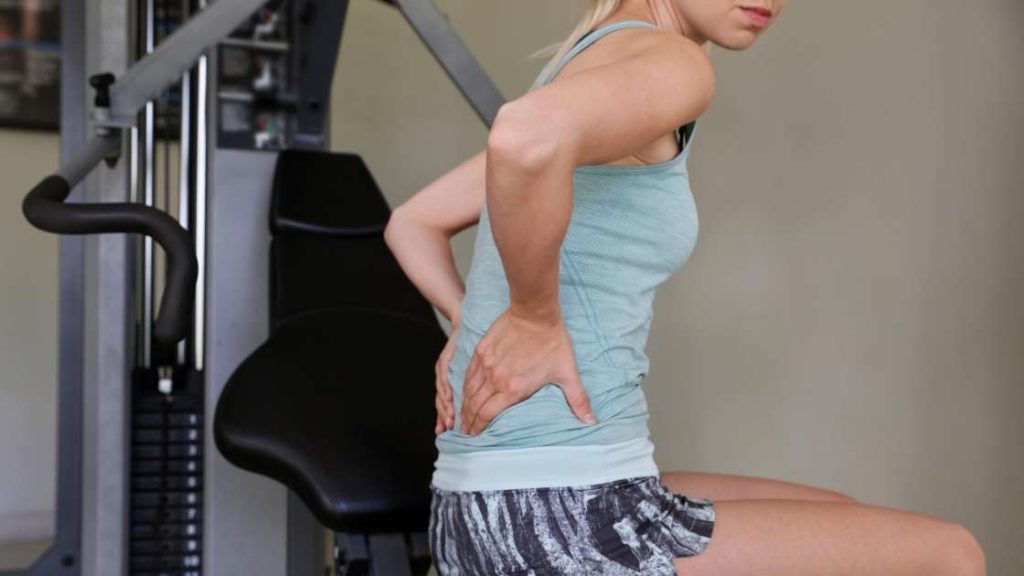Pain vs Discomfort While Working Out

Is it pain, or is it discomfort? This is a question you may ask yourself when you feel a burn in your core while performing a basic plank. Well, maybe you haven’t asked yourself that question word for word. But you possibly may have wondered, perhaps while feeling short of breath during a run, if that unpleasant sensation is normal or cause for alarm. Is discomfort a sign that you need a break? Should you push through the pain to get the results you want? And, to restate the first question, is it pain or is it discomfort?
What’s The Difference Between Pain and Discomfort?
It doesn’t matter if you’re a seasoned gym rat or have just enrolled in a beginner’s yoga class. Discomfort is common, expected, and completely normal. That burn in the core during a basic plank? That would be discomfort, as opposed to pain. When you feel your muscles burning, it means the toning and strengthening process is taking place. And that’s a good thing!
That being said, discomfort can easily become pain if it goes unchecked. If the burn becomes so intense that you knock yourself out of proper form, you’re pushing yourself too hard and putting yourself at risk for injury. I’ve talked all about the importance of proper form on many occasions! It should go without saying that injury falls into the pain category.
Ok, so discomfort can potentially lead to poor form, which often leads to muscular or joint-related pain. Hyperextending your muscles is no joke, so be aware of your full range of motion and don’t surpass it! When you start to feel wobbly, take a break before you fall and sprain a joint! But what about the pain that takes place during a workout, not after? How do you differentiate between pain and discomfort mid-pushup?
Discomfort
When you experience discomfort during a workout, you’ll feel one or all of the following:
- Burning in targeted muscles – If you’re holding your breath to work through the intensity, it’s time to take a break!
- Tired muscles – As stated earlier, take a break if you can’t maintain proper form.
- Tightness or dull soreness at rest – It’s always helpful to have a cold pack nearby if you’re working out. Hard-working muscles are expected to become tight and sore, and you’ll feel it in between sets. Apply a cold pack to your skin to reduce inflammation. Then continue with the next set, unless you’re doing it for the day.
Pain
Now finally, let’s dig into that pain. Pain is, unlike discomfort, not something you should pass off as normal and push yourself through. When you experience actual pain, you’re putting yourself at risk for injury if you ignore it.
Stop immediately if you experience any of the following:
- Sharp or stabbing pain – This may be a sign of a muscle strain, impinged tendon, meniscal tear, or bone on bone contact.
- Swelling – This is one of the many symptoms of a muscle strain.
-
- Please note: it’s very common for hands and fingers to swell, and this is usually no cause for alarm. If you notice this, just do some forward and backward arm circles. The action will get your lymph moving around, reducing the swelling. Also, be sure to take off your rings and bracelets.
-
- Joint pain – A muscle, tendon, or ligament tear may be present.
- Chest tightness – Exercise-induced bronchospasm, also called exercise-induced asthma, causes the airways in the lungs to narrow. Chest tightness is a common symptom.
-
- In more serious cases, chest tightness may be due to underlying illness or the onset of a heart attack. NEVER IGNORE CHEST PAIN.
-
- Coughing or wheezing – This is also a symptom of exercise-induced bronchospasm.
- Stomach Ache, nausea, or lightheadedness – The cause might not be serious but take it seriously anyway. You might just be dehydrated and need to drink before continuing the workout. Maybe you ate too recently or ate something not so nutrient-dense, and you need to reduce the intensity. If you’re regularly becoming nauseous during exercise, you may have a rare but serious condition called rhabdomyolysis. This breakdown of muscle releases damaging myoglobin into the bloodstream. Contact your doctor if you’re also experiencing fever, debilitating muscle cramps, chest tightness, lack of sweating, or brown urine.
The Bottom Line
Taking breaks, hydrating, and cold therapy are easy ways to address exercise-related discomfort. Actual pain during a workout should never be ignored. If you chronically endure pain during exercise, consult your physician; from there you can make an exercise routine that addresses the cause of the pain.
Stay happy, healthy, and pain-free!
Katrina Jenkins
Author, Licensed Massage Therapist
Katrina Jenkins graduated from Towson University in 2013 with a Bachelor’s Degree in Health Science and worked as a nurse’s aide briefly before pursuing her true passion. She graduated from the Massage Therapy Institute of Colorado in April 2016 with honors and completed the Touch of Healers Scholarship Program the following summer. She has been a part of the Moyer Total Wellness Team since the summer of 2017.
Resources
Laskowski, MD, Edward R. “Hand Swelling during Exercise: A Concern?” Mayo Clinic, 2 Feb. 2019, www.mayoclinic.org/hand-swelling/expert-answers/faq-20058255. Accessed 1 Mar. 2021.
Publishing, Harvard Health. “Safe Exercise: Know the Warning Signs of Pushing Too Hard.” Harvard Health, Feb. 2015, www.health.harvard.edu/pain/safe-exercise-know-the-warning-signs-of-pushing-too-hard.
Torres, Patrick A, et al. “Rhabdomyolysis: Pathogenesis, Diagnosis, and Treatment.” The Ochsner Journal, vol. 15, no. 1, 2015, pp. 58–69, www.ncbi.nlm.nih.gov/pmc/articles/PMC4365849/.
Photo Credit
Canva by ChesiireCat
